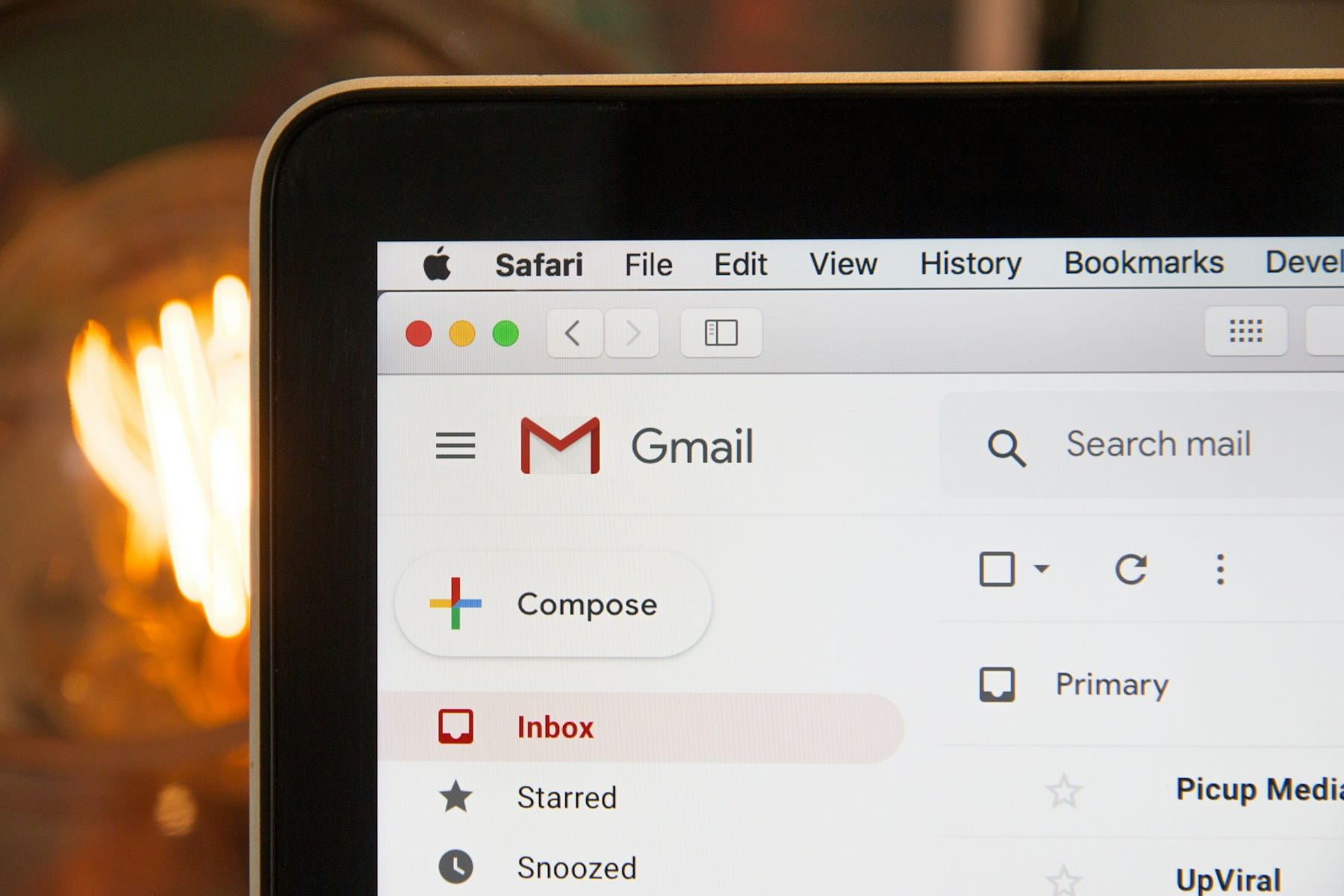6 Essential Steps to Build a Winning Email Marketing Plan [Free Templates]
Email marketing can become complex quickly. It's challenging to estimate budgets for campaigns, tools, and resources throughout the year — especially without a solid email marketing plan in place.
To streamline your planning process, we've compiled a comprehensive guide covering everything you need to include. We've also created practical email marketing plan templates where you can easily customize the details for your business.
In this comprehensive guide, we'll explore:
- What should an email marketing plan include?
- Email Marketing Timeline Planning
- How to Create an Email Marketing Plan
- SelfMailKit's Email Marketing Templates
- Campaign-Specific Email Plan Templates
What should an email marketing plan include?
An email marketing plan serves as a strategic roadmap that businesses use to organize, execute, and track their email marketing initiatives over a defined period. The framework we outline will help you create an effective plan that easily generates stakeholder buy-in.
Email marketing plans can become quite detailed depending on your industry and digital presence scope. This applies whether you're targeting consumers (B2C) or businesses (B2B). Despite these variations, here are the essential components that should be included in every email marketing plan:
Business Overview
In an email marketing plan, a business overview provides exactly what it sounds like — a comprehensive summary of your organization's email marketing context. It gives all stakeholders a refresher on your company's email marketing position before diving into more strategic components.
At minimum, most business overviews should include:
- Company name and email marketing team structure
- Current email list size and quality
- Email marketing mission statement
- Key email marketing leadership roles
SWOT Analysis for Email Marketing
Your email marketing plan should include a specialized SWOT analysis focusing on your email marketing strengths, weaknesses, opportunities, and threats.
Creating an email-focused SWOT analysis is a crucial strategic exercise that provides everyone involved with a clear picture of your email marketing environment and performance within it.
Including this SWOT in your email marketing plan reminds readers of the circumstances being considered in your strategy. Ensure stakeholders from different departments contribute to creating your SWOT analysis so nothing gets overlooked.
For accuracy, this requires thorough market research, email deliverability analysis, and competitive email analysis. Revisit your SWOT each time you update your email marketing plan, as your audience and email landscape will continually evolve.
Email Marketing Objectives
What specific goals is your email marketing team pursuing? What outcomes do you want to achieve? Document these under email marketing objectives in your plan.
This section establishes the foundation for the rest of your document and strategies. Focus on email-specific objectives rather than broad business goals.
Every objective should follow the SMART framework — meaning they are specific, measurable, attainable, relevant, and time-bound.
For example, a vague goal might be, "Increase email subscribers." But a SMART version could be, "Increase email subscribers by 25% within six months through lead generation campaigns."
Target Audience and Segmentation
Next, define your target audience — the subscribers you're trying to reach with your email messages. This includes detailed buyer personas and segmentation strategies.
Industries and Sectors If you're B2B, include descriptions of the industries your customers typically work in. If you're B2C, focus on demographic and psychographic segments instead.
Email Subscriber Personas An email subscriber persona is a detailed description of your ideal email recipient. It focuses on characteristics like:
- Demographics (age, location, job title)
- Email preferences and behaviors
- Content interests and pain points
- Optimal send times and frequency
- Engagement patterns and lifecycle stage
This section should provide a concise summary of your comprehensive buyer persona research to remind readers who your email campaigns are targeting.
Competitive Email Analysis
Your subscribers have choices about which emails they open, engage with, and act upon. A competitive email analysis details the companies or brands competing for your audience's attention in their inboxes.
Consider who your email competition includes, what they execute well, and where gaps exist that you can fill. This analysis should cover:
- Email frequency and timing strategies
- Subject line approaches and effectiveness
- Content themes and value propositions
- Design and user experience quality
Keep this section focused and actionable. Your comprehensive competitive analysis should be conducted separately, with key insights summarized here.
Email Marketing Strategy
This section focuses on outlining what your brand needs to establish effective email marketing presence. In our comprehensive email marketing plan framework, the strategy section encompasses:
Content Strategy:
- Email content themes and messaging pillars
- Content creation workflows and approval processes
- Personalization and dynamic content approaches
- Cross-channel content integration
Technical Strategy:
- Email platform and technology stack decisions
- Email authentication and deliverability setup
- Integration with CRM and other marketing tools
- Data management and compliance protocols
Engagement Strategy:
- Welcome series and onboarding sequences
- Lifecycle email campaigns and automation
- Re-engagement and win-back campaigns
- List growth and retention tactics
Budget and Resource Allocation
When creating your first email marketing plan, it's easy to confuse the budget section with pricing discussions found in your market strategy. This section specifically describes how much money the business has allocated for the email marketing team to pursue the initiatives and goals outlined above.
Depending on your expense categories, you may want to itemize your budget for clarity. Example email marketing expenses include:
- Email platform and software subscriptions (like SelfMailKit)
- Email design and development tools
- List growth and lead generation costs
- Email template design and coding
- A/B testing and analytics tools
- Compliance and deliverability services
Remember, your email marketing plan includes only a budget summary. Maintain a separate detailed spreadsheet for precise budget calculations.
Email Channels and Campaigns
Your email marketing plan should include a comprehensive list of your email channels and campaign types. While your company might use various marketing channels, this section focuses specifically on email touchpoints.
This content educates your subscribers, generates leads, and builds brand awareness through email communication.
Email Campaign Types:
- Welcome and onboarding sequences
- Newsletter campaigns
- Promotional and sales emails
- Educational and nurture sequences
- Event and webinar invitations
- Transactional and behavioral triggers
Map out which email campaigns you plan to launch and how you'll measure success. If you maintain a blog, leverage content repurposing to transform long-form content into email series. This maximizes content ROI and drives website traffic.
Part of this section's purpose is demonstrating to leadership that these email channels will contribute to business growth.
Email Technology Stack
Your email marketing plan should include an overview of the tools in your email marketing technology stack. These tools help you achieve the goals outlined in previous sections.
Since email marketing software represents a significant investment, connecting each tool to potential ROI is essential.
For each tool, describe its specific use case and ensure consistency with strategies outlined elsewhere in your plan. For instance, avoid listing advanced automation tools if you haven't included "Email Automation" under "Email Channels."
Essential Email Marketing Tools:
- Email Service Provider (ESP): Platform for sending and managing emails (like SelfMailKit)
- Email Design Tools: Template creation and design software
- Analytics and Reporting: Email performance measurement tools
- List Management: Subscriber database and segmentation tools
- Automation Platforms: Workflow and trigger-based campaign tools
When discussing email analytics software, specify which metrics you'll track, why those metrics matter, and how they benefit your overall email marketing strategy.
Email Marketing Timeline Planning
Implementing a new email marketing plan requires careful coordination. To ensure smooth execution, create a timeline mapping each campaign and project schedule.
An email marketing timeline allows your team to view all campaigns, automation sequences, seasonal promotions, and related tasks in one place — along with their deadlines. This ensures everyone knows what's due when and what's coming next.
Typically, these plans cover email marketing efforts for the entire year, though some companies operate on quarterly cycles.
Once you've completed analysis, research, and goal setting, establish deadlines for your email initiatives. From new automation sequences to product launch campaigns, everything needs a deadline.
Consider holidays, industry events, and seasonal trends when planning your email calendar. While setting annual deadlines may seem overwhelming, start by estimating task duration, then set deadlines accordingly.
For each email project, build in time for:
Strategy Development: Initial phase where your campaign concept comes to life. Define objectives, target audience, and key stakeholders. Set deadlines and schedule necessary meetings.
Planning and Creation: Determine campaign scope, finalize budget, set deadlines, and assign responsibilities.
Testing and Optimization: Conduct A/B testing, preview across email clients, and optimize deliverability. Set up tracking systems for metrics and KPIs.
Launch and Monitoring: Execute your email campaign and monitor performance in real-time. Track key metrics and adjust strategies based on early results.
Analysis and Iteration: Analyze performance data to determine campaign success. Did you meet your goals? Complete projects on time and within budget? Use insights to improve future campaigns.
Pro tip: Store all projects and deadlines in a central location accessible to your team. This might be a shared calendar, project management tool, or collaboration platform like those integrated with SelfMailKit.
How to Create an Email Marketing Plan
- Research your email marketing landscape
- Define and segment your email audience
- Set SMART email marketing goals
- Plan your email campaigns and automation
- Determine your email marketing budget
- Document and implement your strategy
With the framework mentioned above, here's how to approach creating your email marketing plan:
1. Research your email marketing landscape
The first step involves conducting comprehensive email marketing research. Gather data and insights to complete SWOT and competitive email analyses.
How do your emails compare to competitors? What are they missing in their email strategy? What can you offer that provides a competitive advantage?
Conducting competitive email analysis helps answer these questions and determines what your email subscribers want.
2. Define and segment your email audience
Who are you trying to reach with your emails? Who subscribes to your list and engages with your content?
If your company already has email subscriber personas, review and refine your current profiles. If not, create detailed personas based on your existing subscriber data.
Your email subscriber personas should include:
- Demographic information (age, location, job title)
- Email engagement behaviors and preferences
- Content interests and pain points
- Optimal send times and frequency preferences
- Position in customer lifecycle
Understanding this information helps define goals and informs your email segmentation strategy.
3. Set SMART email marketing goals
You can't improve email performance without clear objectives. After understanding your current situation and knowing your audience, define SMART email marketing goals.
SMART goals are specific, measurable, attainable, relevant, and time-bound. All goals should include specific metrics and timeframes.
For example, your goal might be to "Increase email open rates by 20% and click-through rates by 15% within four months through improved subject line testing and content personalization."
Write out all goals before analyzing tactics. Then determine which email strategies will help achieve these objectives.
4. Plan your email campaigns and automation
What email campaigns and automation sequences will help achieve your goals? Which content themes and call-to-actions should you focus on?
If your goal is increasing engagement, your tactics might include:
- Welcome series optimization
- Weekly newsletter with valuable content
- Behavioral trigger campaigns
- Re-engagement sequences for inactive subscribers
Brainstorm multiple tactics for each goal, though budget constraints may limit implementation options.
5. Determine your email marketing budget
Before implementing ideas from previous steps, establish your email marketing budget. Your tactics might include advanced automation and design tools, but budget limitations could affect goal achievement.
While outlining tactics, note estimated costs including:
- Platform subscription fees (like SelfMailKit)
- Design and development time
- Content creation resources
- Testing and optimization tools
6. Document and implement your strategy
With all information gathered, document your comprehensive email marketing plan. Use templates and frameworks that work best for your organization and stakeholders.
Build Your Email Marketing Plan with SelfMailKit
Creating an effective email marketing plan requires combining strategic thinking with reliable technology. Understanding your audience and setting clear objectives provides the foundation, while the right platform ensures successful execution.
SelfMailKit offers comprehensive tools and infrastructure designed specifically for implementing sophisticated email marketing plans. Our platform includes intuitive campaign builders, advanced automation capabilities, detailed analytics, and deliverability features that help teams execute their email marketing strategies effectively.
Whether you're launching your first email marketing plan or scaling complex automation strategies for growing subscriber lists, SelfMailKit provides the flexibility and reliability required for email marketing success. Our developer-friendly approach ensures seamless integration while maintaining the performance needed for sustainable growth.
Discover how SelfMailKit can support your email marketing planning with infrastructure designed for modern marketing teams. Learn more about our comprehensive email marketing platform and why SelfMailKit is different from other email solutions.






